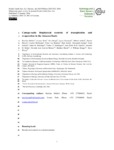Por favor, use este identificador para citar o enlazar este ítem:
http://www.alice.cnptia.embrapa.br/alice/handle/doc/1055915Registro completo de metadatos
| Campo DC | Valor | Lengua/Idioma |
|---|---|---|
| dc.contributor.author | MALLICK, K. | pt_BR |
| dc.contributor.author | TREBS, I. | pt_BR |
| dc.contributor.author | BOEGH, E. | pt_BR |
| dc.contributor.author | GIUSTARINI, L. | pt_BR |
| dc.contributor.author | SCHLERF, M. | pt_BR |
| dc.contributor.author | DREWRY, D. T. | pt_BR |
| dc.contributor.author | HOFFMANN, L. | pt_BR |
| dc.contributor.author | RANDOW, C. von | pt_BR |
| dc.contributor.author | KRUIJT, B. | pt_BR |
| dc.contributor.author | ARAUJO, A. | pt_BR |
| dc.contributor.author | SALESKA, S. | pt_BR |
| dc.contributor.author | EHLERINGER, J. R. | pt_BR |
| dc.contributor.author | DOMINGUES, T. F. | pt_BR |
| dc.contributor.author | OMETTO, J. P. H. B. | pt_BR |
| dc.contributor.author | NOBRE, A. D. | pt_BR |
| dc.contributor.author | MORAES, O. L. L. de | pt_BR |
| dc.contributor.author | HAYEK, M. | pt_BR |
| dc.contributor.author | MUNGER, J. W. | pt_BR |
| dc.contributor.author | WOFSY, S. C. | pt_BR |
| dc.date.accessioned | 2016-11-04T11:11:11Z | pt_BR |
| dc.date.available | 2016-11-04T11:11:11Z | pt_BR |
| dc.date.created | 2016-11-04 | pt_BR |
| dc.date.issued | 2016 | pt_BR |
| dc.identifier.citation | Hydrology and Earth System Science Discussions, 27 Jan. 2016. | pt_BR |
| dc.identifier.uri | http://www.alice.cnptia.embrapa.br/alice/handle/doc/1055915 | pt_BR |
| dc.description | Canopy and aerodynamic conductances (gC and gA) are two of the key land surface biophysical variables that control the land surface response of land surface schemes in climate models. Their representation is crucial for predicting transpiration (?ET) and evaporation (?EE) flux components of the terrestrial latent heat flux (?E), which has important implications for global climate change and water resource management. By physical integration of radiometric surface temperature (TR) into an integrated framework of the Penman?Monteith and Shuttleworth?Wallace models, we present a novel approach to directly quantify the canopy-scale biophysical controls on ?ET and ?EE over multiple plant functional types (PFTs) in the Amazon Basin. Combining data from six LBA (Large-scale Biosphere-Atmosphere Experiment in Amazonia) eddy covariance tower sites and a TR-driven physically based modeling approach, we identified the canopy-scale feedback-response mechanism between gC, ?ET, and atmospheric vapor pressure deficit (DA), without using any leaf-scale empirical parameterizations for the modeling. The TR-based model shows minor biophysical control on ?ET during the wet (rainy) seasons where ?ET becomes predominantly radiation driven and net radiation (RN) determines 75 to 80?% of the variances of ?ET. However, biophysical control on ?ET is dramatically increased during the dry seasons, and particularly the 2005 drought year, explaining 50 to 65?% of the variances of ?ET, and indicates ?ET to be substantially soil moisture driven during the rainfall deficit phase. Despite substantial differences in gA between forests and pastures, very similar canopy?atmosphere "coupling" was found in these two biomes due to soil moisture-induced decrease in gC in the pasture. This revealed the pragmatic aspect of the TR-driven model behavior that exhibits a high sensitivity of gC to per unit change in wetness as opposed to gA that is marginally sensitive to surface wetness variability. Our results reveal the occurrence of a significant hysteresis between ?ET and gC during the dry season for the pasture sites, which is attributed to relatively low soil water availability as compared to the rainforests, likely due to differences in rooting depth between the two systems. Evaporation was significantly influenced by gA for all the PFTs and across all wetness conditions. Our analytical framework logically captures the responses of gC and gA to changes in atmospheric radiation, DA, and surface radiometric temperature, and thus appears to be promising for the improvement of existing land?surface?atmosphere exchange parameterizations across a range of spatial scales. | pt_BR |
| dc.language.iso | por | pt_BR |
| dc.rights | openAccess | pt_BR |
| dc.subject | Transpiração | pt_BR |
| dc.title | Canopy-scale biophysical controls of transpiration and evaporation in the Amazon Basin. | pt_BR |
| dc.type | Artigo de periódico | pt_BR |
| dc.date.updated | 2017-03-03T11:11:11Z | pt_BR |
| dc.subject.thesagro | Climatologia | pt_BR |
| dc.subject.thesagro | Evaporação | pt_BR |
| dc.subject.nalthesaurus | Amazonia | pt_BR |
| riaa.ainfo.id | 1055915 | pt_BR |
| riaa.ainfo.lastupdate | 2017-03-03 | pt_BR |
| dc.identifier.doi | 10.5194/hess-2015-552 | pt_BR |
| dc.contributor.institution | KANISKA MALLICK, Luxembourg Institute of Science and Technology | pt_BR |
| dc.contributor.institution | IVONNE TREBS, Luxembourg Institute of Science and Technology | pt_BR |
| dc.contributor.institution | EVA BOEGH, Roskilde University | pt_BR |
| dc.contributor.institution | LAURA GIUSTARINI, Luxembourg Institute of Science and Technology | pt_BR |
| dc.contributor.institution | MARTIN SCHLERF, Luxembourg Institute of Science and Technology | pt_BR |
| dc.contributor.institution | DARREN DREWRY, California Institute of Technology | pt_BR |
| dc.contributor.institution | LUCIEN HOFFMANN, Luxembourg Institute of Science and Technology | pt_BR |
| dc.contributor.institution | CELSO VON RANDOW, INPE | pt_BR |
| dc.contributor.institution | BART KRUIJT, Wageningen University and Research Centre | pt_BR |
| dc.contributor.institution | ALESSANDRO CARIOCA DE ARAUJO, CPATU | pt_BR |
| dc.contributor.institution | SCOTT SALESKA, University of Arizona | pt_BR |
| dc.contributor.institution | JAMES R. EHLERINGER, University of Utah | pt_BR |
| dc.contributor.institution | TOMAS F. DOMINGUES, USP | pt_BR |
| dc.contributor.institution | JEAN PIERRE H. B. OMETTO, INPE | pt_BR |
| dc.contributor.institution | ANTONIO D. NOBRE, INPE | pt_BR |
| dc.contributor.institution | OSVALDO LUIZ LEAL DE MORAES, Centro Nacional de Monitoramento e Alertas de Desastres Naturais | pt_BR |
| dc.contributor.institution | MATTHEW HAYEK, Harvard University | pt_BR |
| dc.contributor.institution | WILLIAM MUNGER, Harvard University | pt_BR |
| dc.contributor.institution | STEVE WOFSY, Harvard University. | pt_BR |
| Aparece en las colecciones: | Outras publicações (CPATU)  | |
Ficheros en este ítem:
| Fichero | Descripción | Tamaño | Formato | |
|---|---|---|---|---|
| hess2015552.pdf | 4,5 MB | Adobe PDF |  Visualizar/Abrir |









